

The 26th China International Dental Equipment Exhibition (DenTech China 2023) was jointly organized by China International Science and Technology Exchange Center, China Association for Science and Technology New Technology Development Center Co., LTD., China Association of Non-Public Medical Institutions and Shanghai Bo Xing Exhibition Co., LTD. The “DenTech China 2023” was successfully held at the Shanghai World Expo Exhibition and Convention Center from October 14 to October 17, 2023. 50,000 square meters of exhibition area, more than 850 exhibitor and 200 speakers at the same academic conference, feel the cutting-edge dental technology, enjoy quality one-stop service.
In this exhibition, Anya Medical arrived as scheduled to participate in the oral industry exchange event, and gained a lot. This article takes you to feel the wonderful moments of the exhibition!
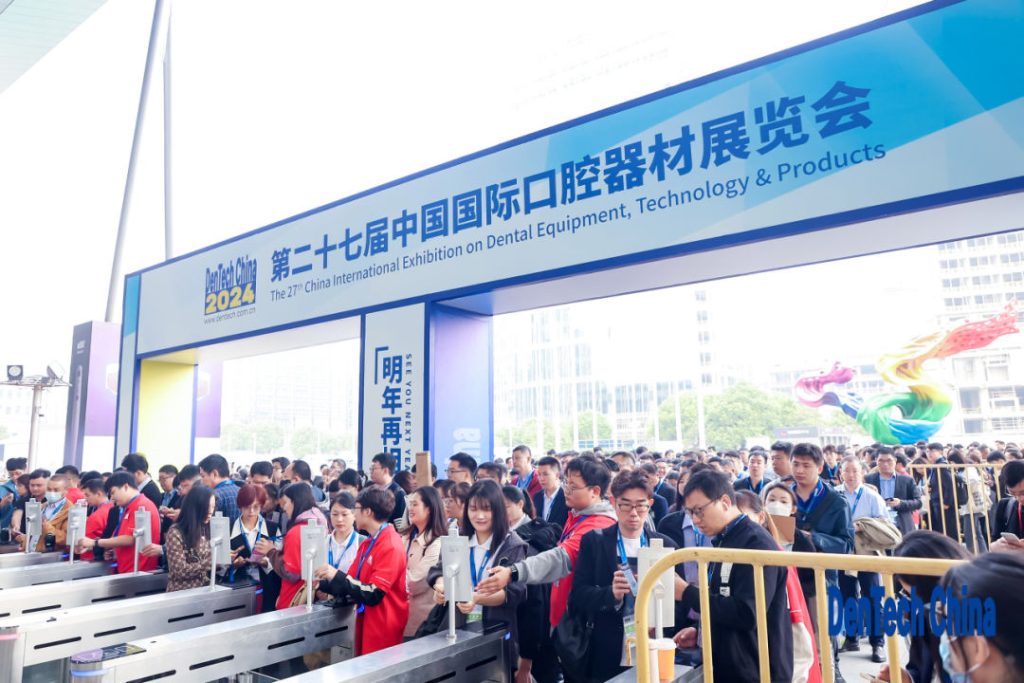

(The Photos are transferred from the official wechat account of DenTech China)
Autumn has a lukewarm gentleness, driving the enthusiasm of the exhibition. Exhibition hall maintains the popularity, exhibitors and audience are full of laughter. The proportion of professional foreign audience is very high, and the enthusiasm of Chinese and foreign friends keeps raising!

Anya medical booth design as always uses classic orange as the main color,since the brand was established in 2007, it develops continuously, now it has a high reputation, Anya orange has become an important business card.
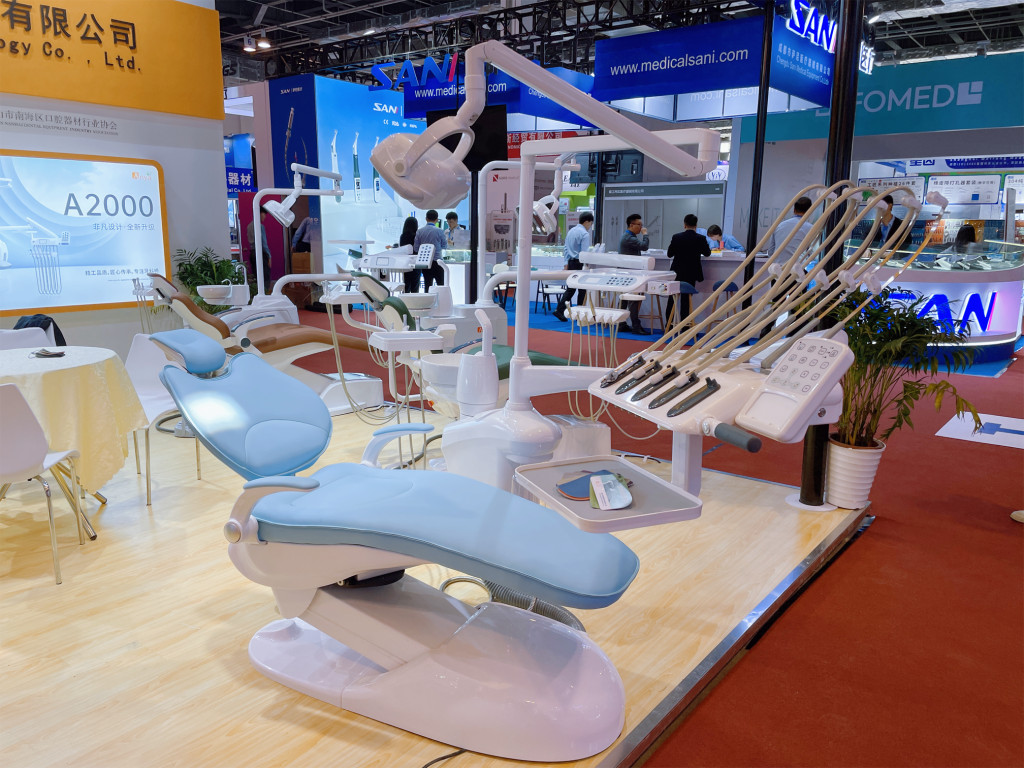
The latest dental chair first appeared at the booth, the new appearance design, with compensation chair function, attracted many people to come to consult and experience.

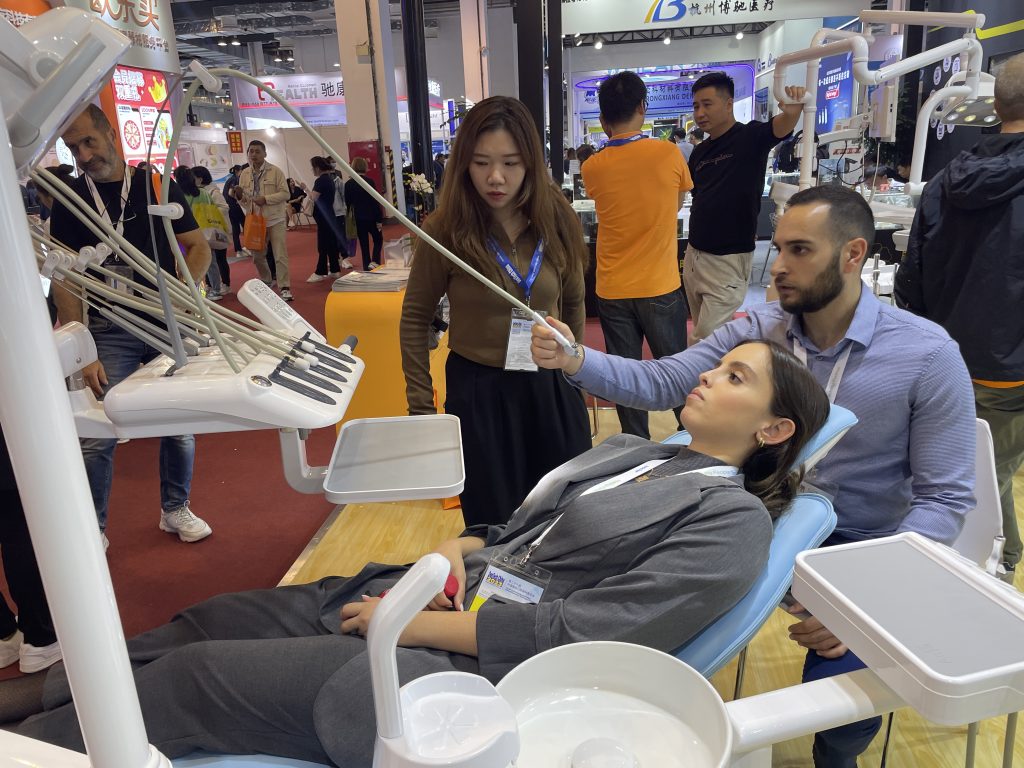
To be extraordinary is the design concept of Anya Medical, adhering to the principle of providing first-class experience, welcome all the clients and friends to personally experience to get the most intuitive and true feeling.


Efficient service, on-site transaction. We win the trust and recognition of customers with reliable quality and attentive service.
Peroration:Our step never stops and the future is promising
DenTech China 2023 has come to a successful end. In the future, Anya Medical will continue to uphold the concept of “extraordinary design, precision quality”, and bring more good products and provide quality service for new and old clients! Looking forward to meeting you next time!
The dental chair is one of the dental devices that patients come into contact with the most, and the comfort and safety of the dental chair have a crucial impact on the patient’s treatment experience. If the dental chair has malfunctions or any problems, it will not only affect the treatment effect, but also make the patient feel uncomfortable and unsafe. Therefore, proper dental chair maintenance can improve the patient’s treatment experience and enhance their trust and satisfaction.
In a word, regular maintenance of the dental chair can not only extend its service life, but also improve the patient’s treatment experience. Therefore, dental institutions should pay attention to the maintenance of dental chairs to provide patients with a safer, more comfortable and satisfactory treatment experience.

The spittoon should be flushed after each day’s work
Suggestion: Remove the cover of the ceramic spittoon and suction filter, wipe them with wet water with a disposable towel, or clean the spittoon directly with water.
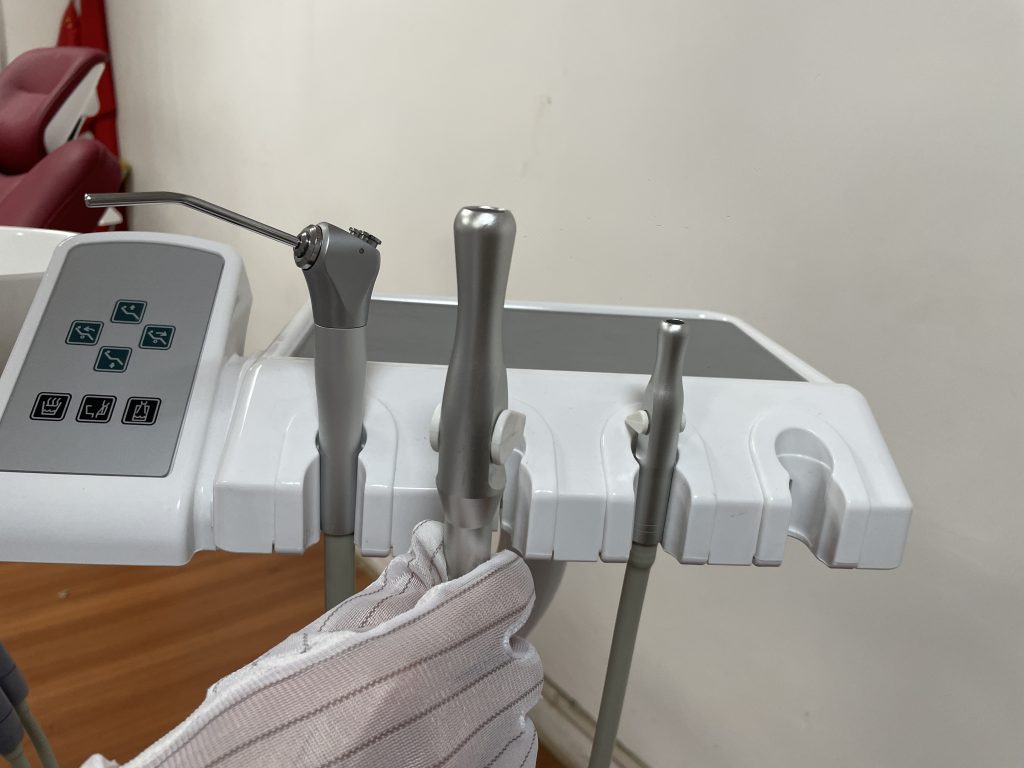
After each day’s work, remove the suction and disinfect the strong and weak suction tubes with disinfectant.
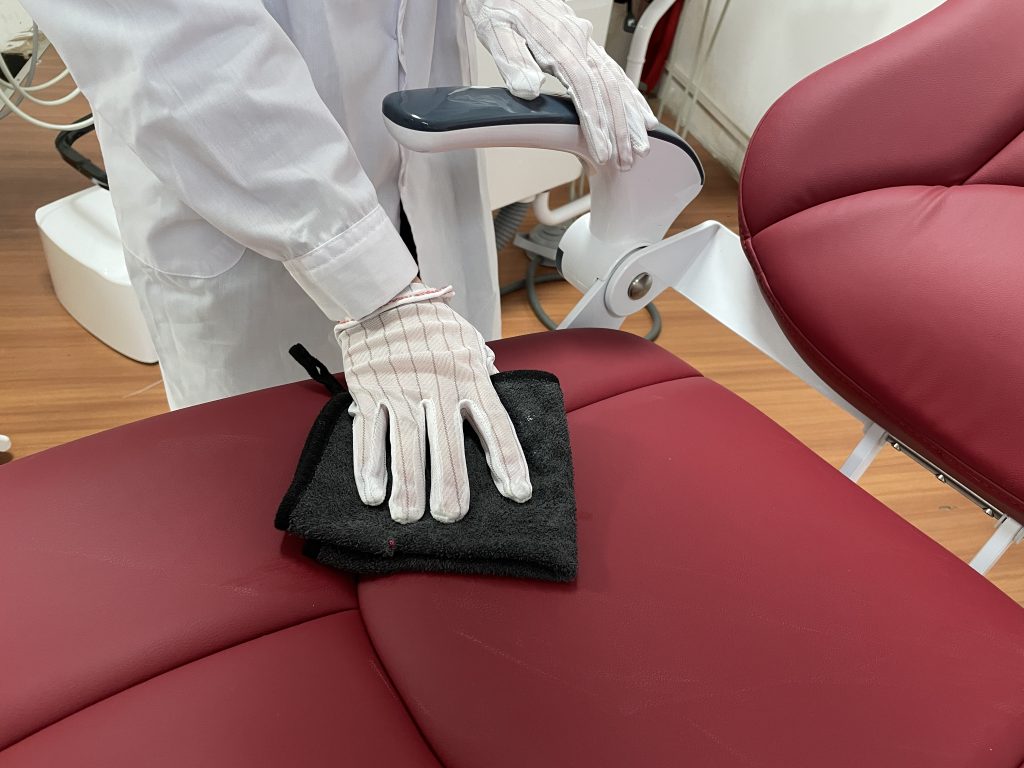
Try to avoid being cut by the patient’s keys and other sharp objects. It is better to wipe it with warm water before using it in winter.
After using it, dilute with disinfectant and purified water, then use a disposable towel to wipe the surface of the cushion with the mixed disinfectant for the first time and wipe with water for the second time.

The handpiece tube should be flushed after the treatment every time
Suggestion: Please use a dental handpiece with anti-suction function
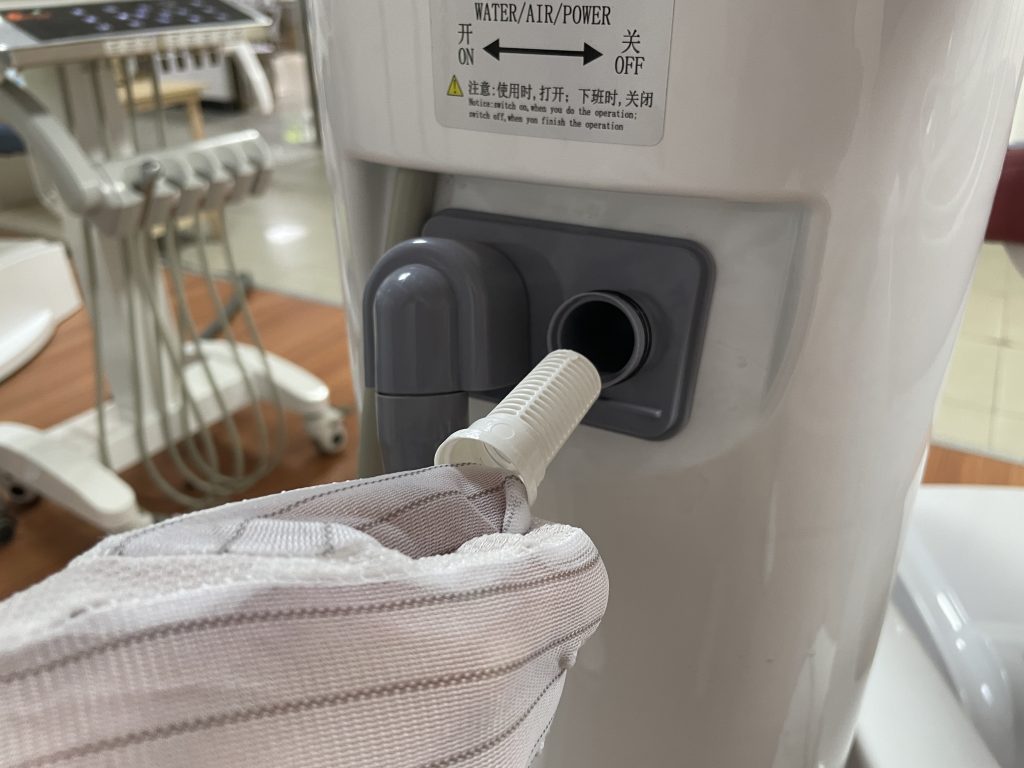
After using it, the suction head connector should be unscrewed,and the suction filter should be washed and cleaned with disinfectant
Suggestion: Clean and change the suction filter every week
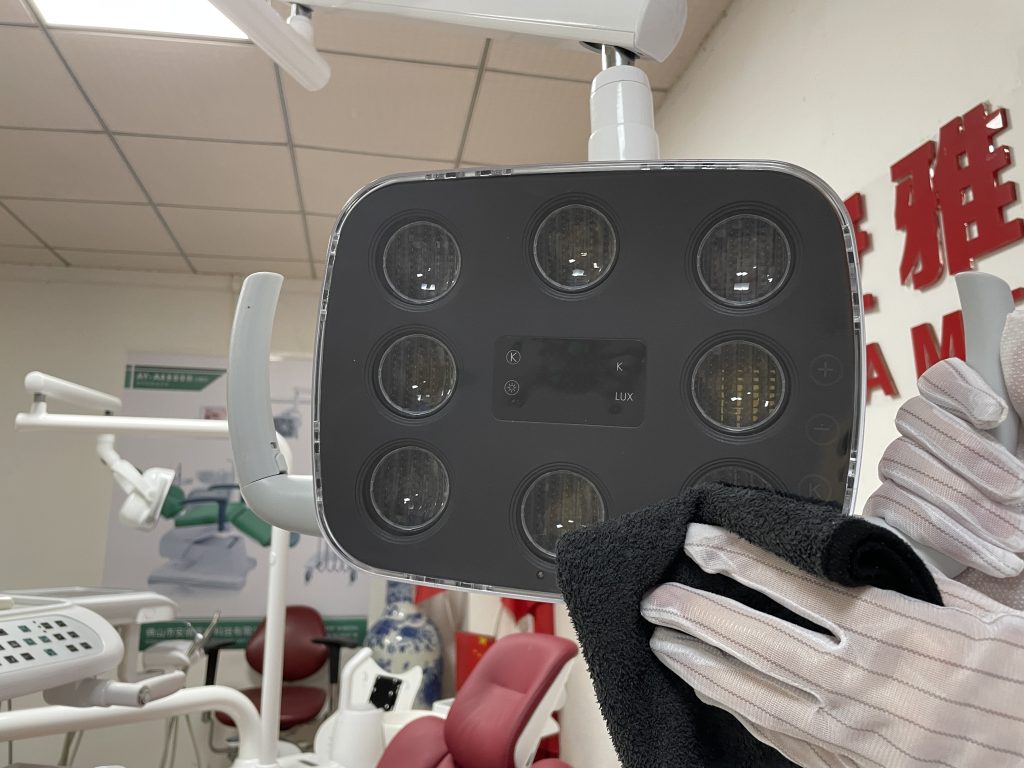
When the oral lamp is cooled, the lamp shell can be wiped. Never wipe the oral lamp shell when it is on.Do not use too much strength to wipe the oral lamp.
The lamp arm is controlled by tension spring, and try not to pull the lamp head back and forth in non-working conditions.
(* Note: Do not use solvents containing alcohol or other chemical disinfectants in contact with the oral lamp.)

1.Rotate the bottom of the water filter counterclockwise, take out the center filter, rinse with water.
2.Rotate the transparent cup of the air filter counterclockwise to clean the filter element.
3.Remove dirt to prevent parts damage caused by entering the water pipe and valve body, which doesn’t make the handpiece operate normally or have a poor effect.

Always power off after each day’s work

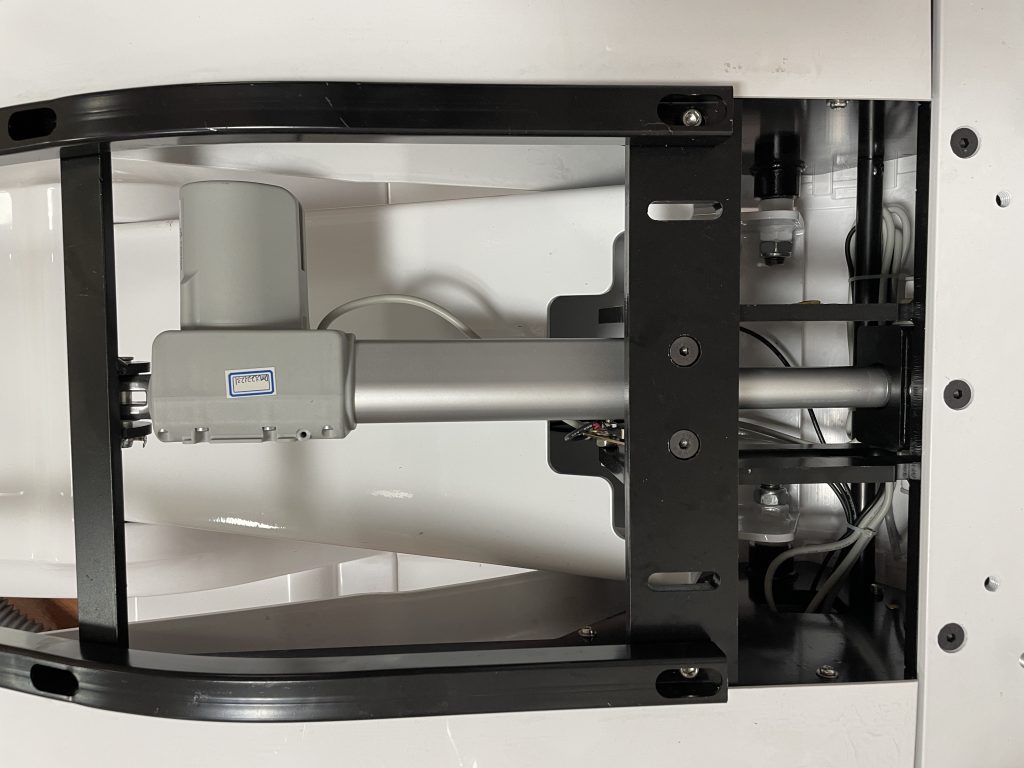
Dental chairs are still in the stage of mechanical and electrical integration, so it is necessary to lubricate the motor for about half a year. (Apply butter to the stretch place)
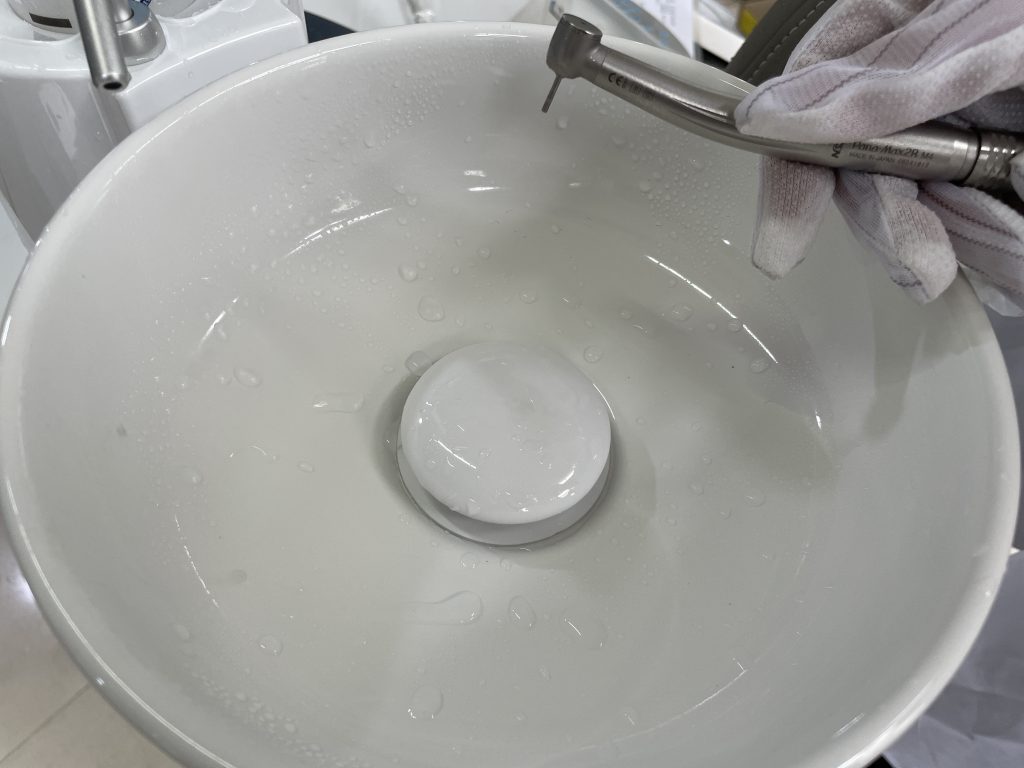

Infection control is of paramount importance in dental practices to safeguard the health of patients and dental staff. Dental chairs, being a central component of the treatment area, play a crucial role in maintaining a safe and hygienic environment. This article explores the key aspects of infection control in dental chairs and provides insights into best practices for ensuring patient safety.
Modern dental chairs are designed with infection control in mind. They feature smooth surfaces, seamless upholstery, and minimal crevices to prevent the accumulation of debris and facilitate easy cleaning and disinfection.
Following proper disinfection protocols is essential for infection control. Dental chairs should be thoroughly cleaned and disinfected between patients using appropriate disinfectants that are effective against a wide range of pathogens.
Using disposable barriers, such as plastic covers or sleeves, on dental chair surfaces can provide an additional layer of protection and prevent cross-contamination. These barriers should be changed between patients.
Certain components of dental chairs, such as suction tubes, saliva ejectors, and air-water syringes, should be sterilizable to eliminate the risk of cross-contamination. Follow manufacturer guidelines for proper sterilization procedures.
Dental chairs are equipped with waterlines that supply water for various procedures. Implementing proper waterline management protocols, such as regular flushing and disinfection, helps prevent the growth of biofilm and ensures a safe water supply.
Practicing proper hand hygiene is crucial for infection control. Dental professionals should follow strict handwashing protocols or use alcohol-based hand sanitizers before and after each patient interaction.
Dental staff should wear appropriate PPE, including gloves, masks, protective eyewear, and gowns, to prevent the transmission of infectious agents. PPE should be worn correctly and disposed of appropriately after treatment.
Routine maintenance and inspection of dental chairs are vital to identify and address any issues that may compromise infection control. Regularly check for damaged or worn-out components and ensure timely repairs or replacements.
Proper training and education of dental staff on infection control practices, including dental chair cleaning and disinfection protocols, are crucial for maintaining a safe and hygienic environment. Stay updated with the latest guidelines and recommendations.
Ensure that your dental practice complies with relevant regulatory standards and guidelines for infection control, such as those issued by dental associations or health authorities. Regular audits and assessments can help identify areas for improvement.
Infection control in dental chairs is a critical aspect of providing safe and quality dental care. By implementing proper cleaning protocols, utilizing disposable barriers, managing waterlines, practicing hand hygiene, and following regulatory standards, dental practices can create a safe and hygienic environment for patients and dental staff alike. Prioritizing infection control in dental chairs demonstrates a commitment to patient safety and contributes to the overall success of the dental practice.

Disinfection and sterilization of dental instruments are critical processes that ensure the safety and well-being of patients in dental practices. This article explores the importance of proper disinfection and sterilization procedures, outlines the key steps involved, and emphasizes the significance of maintaining high standards of infection control in dental settings.
Disinfection and sterilization are distinct processes. Disinfection involves the elimination of most pathogenic microorganisms, while sterilization aims to destroy all microorganisms, including bacteria, viruses, and fungi, to achieve a higher level of infection control.
Dental instruments can be categorized into critical, semi-critical, and non-critical, each requiring specific levels of disinfection or sterilization. Critical instruments that penetrate soft tissues or bone require sterilization, while semi-critical instruments that contact mucous membranes necessitate high-level disinfection.
Thorough pre-cleaning of instruments is essential before disinfection or sterilization. Remove visible debris and organic matter by rinsing, brushing, or using ultrasonic cleaners. Pre-cleaning facilitates the effectiveness of subsequent disinfection or sterilization processes.
High-level disinfection is typically achieved through chemical immersion or use of liquid chemical sterilants. Intermediate-level disinfection may be employed for semi-critical instruments. Follow manufacturer instructions and recommended contact times for specific disinfectants.
Sterilization can be accomplished through various methods, including steam autoclaving, chemical sterilization, and dry heat sterilization. Steam autoclaving is the most commonly used method, utilizing high-pressure steam to achieve effective sterilization. Follow manufacturer guidelines and ensure proper cycle parameters are met.
After disinfection or sterilization, instruments should be properly packaged in sterilization pouches or wraps to maintain their sterility until use. Store sterilized instruments in a clean, dry, and designated area to prevent contamination.
Implement a robust monitoring system to ensure the effectiveness of disinfection and sterilization processes. Regularly test and monitor sterilization equipment, document results, and maintain records as proof of compliance with infection control guidelines.
Dental professionals should follow proper PPE protocols when handling contaminated instruments, including gloves, masks, protective eyewear, and gowns. PPE helps prevent cross-contamination and ensures the safety of both the dental team and patients.
Education and training are essential for dental professionals to understand and adhere to proper disinfection and sterilization protocols. Regularly update staff on the latest guidelines and best practices to maintain a high level of infection control.
Comply with local, regional, and national regulations and guidelines related to disinfection and sterilization in dental practices. Stay informed about any updates or changes in regulations to ensure ongoing compliance.
Proper disinfection and sterilization of dental instruments are fundamental for maintaining a safe and hygienic environment in dental practices. By following established protocols, dental professionals can effectively eliminate or reduce the risk of cross-contamination and the spread of infectious agents. Adhering to high standards of disinfection and sterilization promotes patient safety, instills confidence in dental care, and upholds the principles of infection control in dental settings.

Ergonomics plays a crucial role in dentistry, ensuring the health and well-being of dental professionals while enhancing the quality of patient care. This article explores the importance of ergonomics in dentistry and how it positively impacts dental professionals, patient outcomes, and overall practice efficiency.
Ergonomics in dentistry focuses on creating a workspace that minimizes physical strain and promotes optimal posture. Proper ergonomics reduce the risk of musculoskeletal disorders, such as back pain, neck strain, and carpal tunnel syndrome, which are common among dental professionals. By providing ergonomic dental chairs, adjustable equipment, and proper positioning, the risk of work-related injuries can be significantly reduced.
Ergonomically designed dental equipment and workstations improve precision and efficiency during dental procedures. When dental professionals are in a comfortable and ergonomic position, they can maintain better control and accuracy, leading to improved treatment outcomes with reduced errors or complications. Ergonomics also allows for better access to the oral cavity, enhancing visibility and facilitating efficient workflow.
A well-designed ergonomic workspace in dentistry promotes productivity. Dental professionals can work more efficiently and effectively when they are comfortable and free from physical discomfort. Reduced fatigue and improved focus contribute to higher productivity levels, allowing for more patients to be treated without compromising quality of care.
Ergonomics in dentistry extends beyond the well-being of dental professionals; it also positively impacts patient comfort and trust. When patients observe dental professionals working in a relaxed and comfortable manner, it instills confidence and trust in the quality of care they will receive. Ergonomic dental chairs and properly positioned equipment contribute to a positive patient experience, fostering a sense of ease and reducing anxiety during dental procedures.
Investing in ergonomic equipment and workstations may incur initial costs, but it can lead to substantial long-term cost savings. By reducing the risk of work-related injuries and associated healthcare expenses, dental professionals can avoid medical leave, worker’s compensation claims, and the need for costly treatments. Additionally, improved efficiency and productivity can lead to increased revenue generation.
A dental practice that prioritizes ergonomics creates a more desirable working environment, attracting and retaining talented dental professionals. A practice that demonstrates a commitment to the well-being and health of its staff is more likely to foster a positive work culture and attract individuals seeking long-term career satisfaction.
Ergonomics in dentistry is not only crucial for the health and well-being of dental professionals but also for enhancing patient care and practice efficiency. By investing in ergonomic equipment, workstations, and proper positioning, dental practices can create a safe, comfortable, and efficient environment for both dental professionals and patients. Prioritizing ergonomics in dentistry contributes to improved health outcomes, enhanced treatment precision, increased productivity, patient satisfaction, and long-term cost savings.

The dental experience can be intimidating for many patients, but dental chairs play a crucial role in transforming that experience into one that is comfortable, communicative, and confidence-inspiring. This article explores the significant role dental chairs play in enhancing the overall patient experience and fostering positive dental encounters.
Dental chairs have evolved to prioritize patient comfort. With features such as memory foam cushions, lumbar support, and adjustable armrests, patients can feel more at ease during their dental procedures. Comfortable seating promotes relaxation, reducing anxiety and creating a more positive experience.
Dental chairs are designed to help alleviate patient anxiety. Integrated multimedia systems, such as LCD screens or audio systems, provide distractions and entertainment during treatments. These features help patients feel more at ease, diverting their attention from potential discomfort or anxiety-inducing procedures.
Dental chairs facilitate better communication between patients and dental professionals. With adjustable headrests and ergonomic designs, patients can achieve a comfortable position that allows them to maintain eye contact and communicate more effectively with the dentist. This enhances the patient-dentist relationship and fosters a sense of trust and understanding.
Modern dental chair unit provides improved accessibility for patients with mobility challenges. Features such as motorized chair movements and adjustable armrests allow patients to comfortably get in and out of the chair, accommodating various physical needs. This inclusivity promotes a positive experience for all patients.
Dental chairs can be equipped with integrated technology, such as intraoral cameras or digital displays, enabling dentists to educate and engage patients during treatments. Visual aids and real-time imaging help patients better understand their oral health conditions, treatment options, and post-treatment care, empowering them to actively participate in their dental care journey.
Dental chairs offer customization options to cater to individual patient needs. Adjustable features, such as chair height, backrest angle, and headrest position, allow for personalized comfort and support. This customization enhances patient satisfaction and promotes a sense of being cared for as an individual.
Dental chairs are designed with ergonomics in mind, benefiting both patients and dental professionals. Proper positioning of the dental chair enables dentists to maintain an optimal posture, reducing strain and fatigue during procedures. This, in turn, improves the dentist’s focus, precision, and overall efficiency.
The comfort and functionality of dental chairs contribute to creating a confidence-building environment for patients. When patients feel comfortable and well-cared for in the dental chair, they are more likely to trust the dental team and have confidence in the quality of care they receive. This positive experience can lead to improved patient satisfaction and loyalty.
Dental chairs are more than just seating arrangements; they are instrumental in shaping the patient experience. By providing comfort, reducing anxiety, facilitating communication, and accommodating individual needs, dental chairs contribute to a positive and patient-centric environment. Investing in modern dental chairs that prioritize patient experience can lead to enhanced satisfaction, improved treatment outcomes, and stronger patient-dentist relationships.
